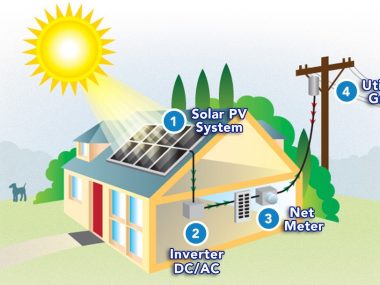- The Future of Solar Energy focuses solely on the two well-established technologies for converting solar energy into electricity: photovoltaics (PV) and concentrated solar power (CSP), also known as solar thermal, in their current and potential future iterations. Given that energy infrastructure typically has a long lifespan, technologies within these categories are expected to dominate solar-powered generation until 2050, and we do not extend our analysis beyond that timeframe. Unlike previous studies on the future, we refrain from making forecasts for two main reasons. Firstly, significant expansion of the solar industry from its current modest scale may lead to unforeseen changes. Secondly, we acknowledge that future solar deployment will be heavily influenced by uncertain market conditions and public policies, particularly those aimed at addressing global climate change.
- Consistent with other reports in this series, our main objective is to provide insights for decision-makers in developed countries, with a particular focus on the United States. We emphasize the adoption of grid-connected solar power generators to replace traditional sources of electricity. However, for over a billion people in developing regions lacking reliable access to electricity grids, the benefits of small-scale PV generation often outweigh its costs, given the critical importance of electricity for lighting and charging mobile devices. Moreover, in certain developing nations, employing solar generation to diminish dependence on imported oil, especially for remote generator sites accessible only by truck, may prove economically viable. A supplementary working paper addresses these crucial roles of solar energy in the developing world.
What is the potential for solar power energy in the future
The future prospects for solar energy are vast. Its renewable, abundant, and eco-friendly nature positions it as a highly promising energy source. Several factors contribute to its potential:
Advancements in Technology:
Continuous progress in enhancing solar panel efficiency, energy storage technologies, and manufacturing processes is driving down costs and improving effectiveness.
Cost Reduction:
Solar panel costs have steadily decreased, broadening access to solar energy for a larger segment of society.
As technology advances and economies of scale kick in, solar power will become even more affordable.
Environmental Urgency:
Mounting concerns over climate change and the imperative to curb greenhouse gas emissions are pushing for a shift towards renewable energies like solar power.
Government Initiatives:
Many governments globally are enacting policies and offering incentives to encourage the adoption of solar energy, including tax credits, subsidies, and feed-in tariffs, fostering investment in solar infrastructure.
Energy Independence:
Solar power presents an opportunity for increased energy independence by lessening reliance on finite fossil fuel resources, particularly beneficial for nations with limited domestic energy sources.
Versatility and Scalability:
Solar energy can be deployed across various scales, from small rooftop setups to large utility-scale installations, making it adaptable to diverse applications and environments.
Economic Opportunities:
The solar industry holds the potential to generate significant employment opportunities and spur economic growth, especially in manufacturing, installation, and maintenance sectors.
Research and Development:
Ongoing efforts in R&D aim to enhance solar technology, including the development of advanced photovoltaic materials and innovative solar cell designs, further amplifying solar energy’s potential in the future.
- In summary, the future of solar power appears promising, poised to play a vital role in meeting global energy demands sustainably and with minimal environmental impact.












